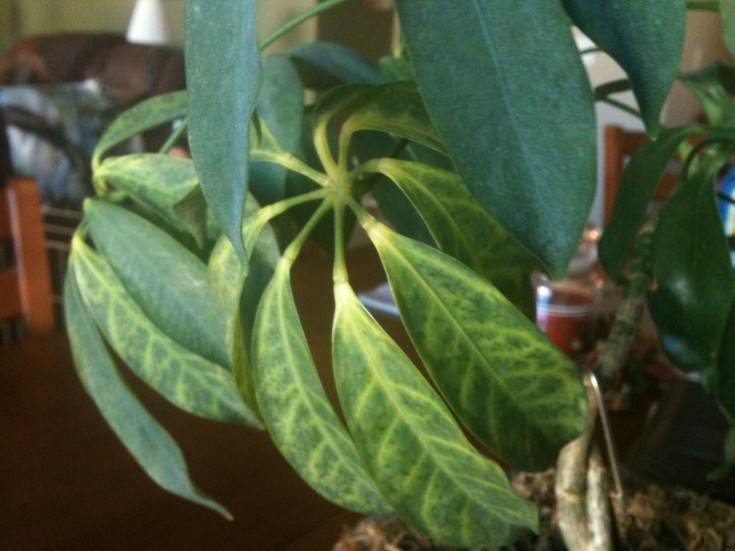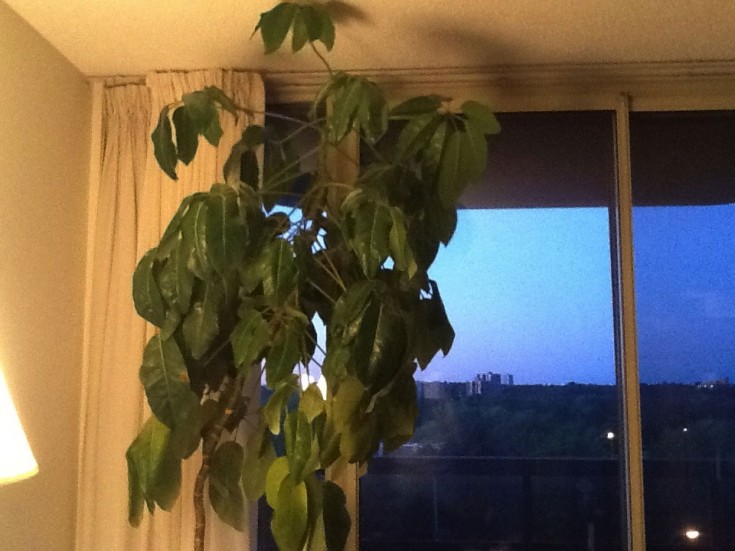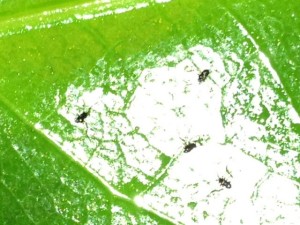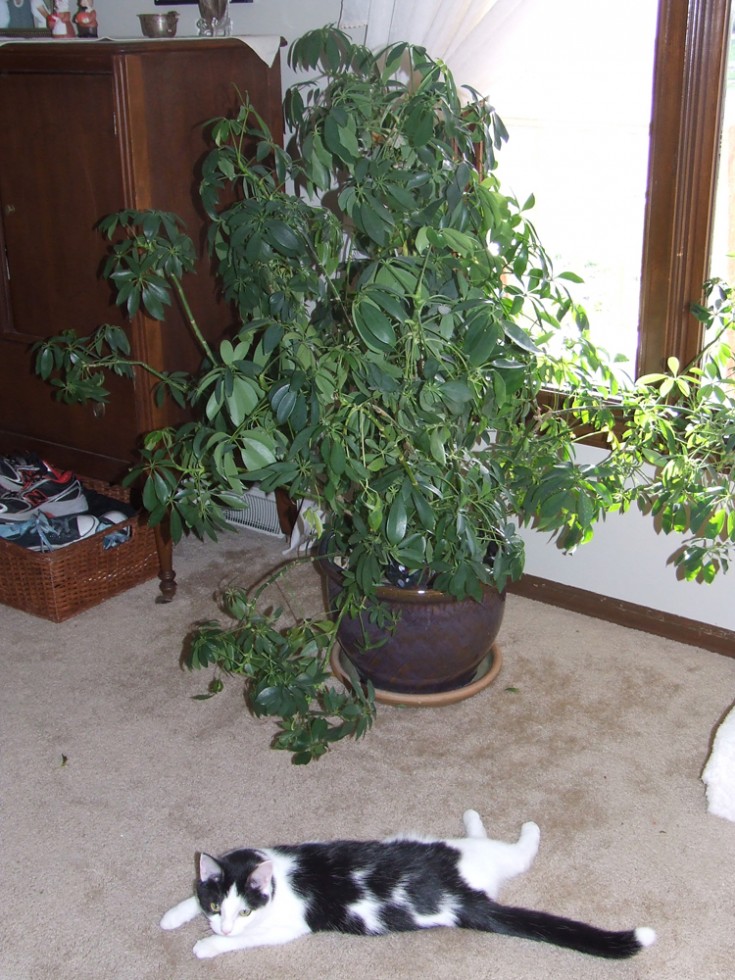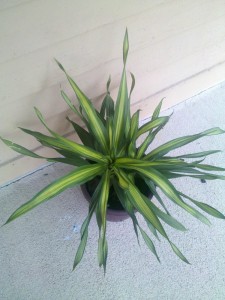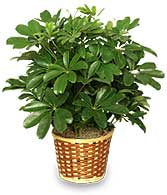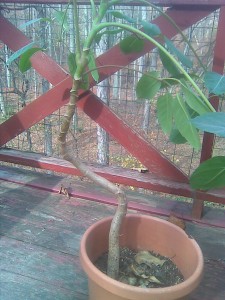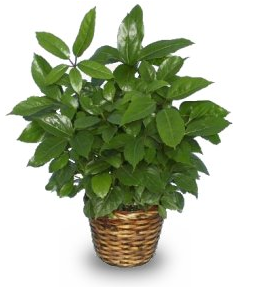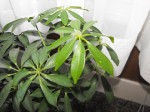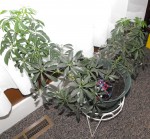Hello, Through unfortunate circumstances I have become the keeper of 2 Schefflera plants. One is a pretty good sized ‘bush’ and the other is much smaller.
They both came from a florist and looked extraordinary 5 days ago. The problem started surfacing the day we brought them home, the leaves started wilting, turning a dark greenish-brown and then falling off. On the smaller plant some of the leaves actually look shriveled and dried (mostly the smaller newer growth). There are a few leaves that have spots on them.
I’m having a hard time telling if they are dry, the soil seems to be deep in the pot and it seems to just be the vine/stem in the soil. Because of this they have been watered thoroughly and drained before putting them back in their decorative pots. They are both in a brightly lit room, the smaller one has been placed near a great vent so I just moved it today.
The larger one is in the same room but not near a vent. They were shipped to a visitation and then put in the car for a few hours before coming home with me – the temp that day was in the single digits. When I first noticed these symptoms it reminded me of what lettuce looks like when it gets frozen then thawed, I thought the extreme temps did something to some of the branches so I trimmed quite a bit of the sickly looking leaves/stems from them. Regardless of doing that they are rapidly losing life. They are holding a sentimental value right now for me and I would really love to keep them happy but not sure how to fix the problem.
Marci
Plant Expert Reply:
Marci,
Wow. It does look like your plants are having a bit of trouble, but I think your plants are still in fairly good condition.
Exposure to cold temperatures may have caused some of the problems you are seeing. But from a glance, I would say the plants could have a broad mite problem. Broad mites will often cause new leaves to cup downward and pucker, as well as cause leaves to be stunted with serrated margins. You will need a magnifying glass to identify the mites. If your plant does have mites, I recommend removing all damaged leaves and stems and treating with a miticide. Your local garden center should have one that will work.
The sticky substance could also indicate an aphid problem. If you have aphids, you should be able to see them without a magnifying glass. Look at the underneath side of the leaves. If aphids are a problem, you will need to treat with an insecticide.
I am not sure what you mean when you say ” I’m having a hard time telling if they are dry, the soil seems to be deep in the pot and it seems to just be the vine/stem in the soil. Because of this they have been watered thoroughly and drained before putting them back in their decorative pots.”
If you can give me a little more information or a picture of the soil, I think I can help you avoid water stress issues.
At the bottom of our Dwarf Schefflera page you can find a list of care instruction that might help.
I hope this information is helpful.
Thanks!
Jamie Jamison Adams


 Find Your
Find Your 

